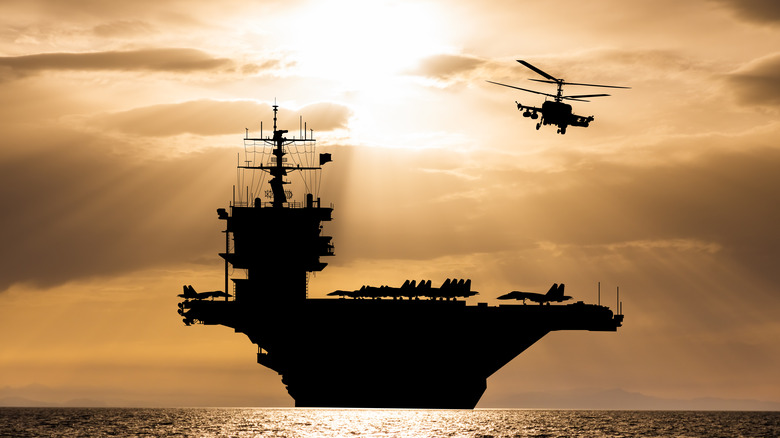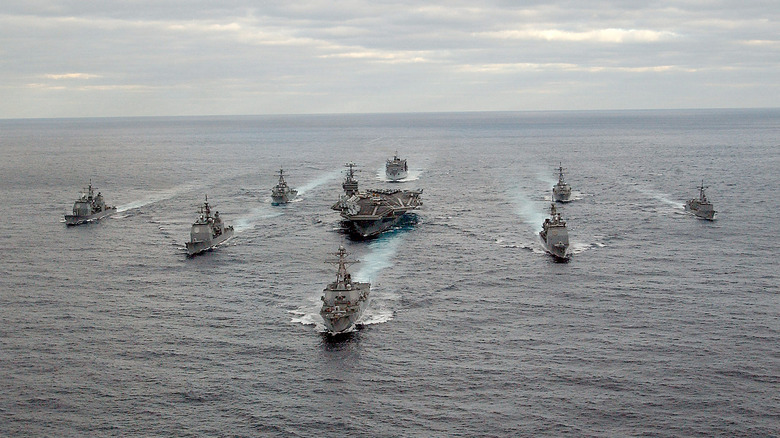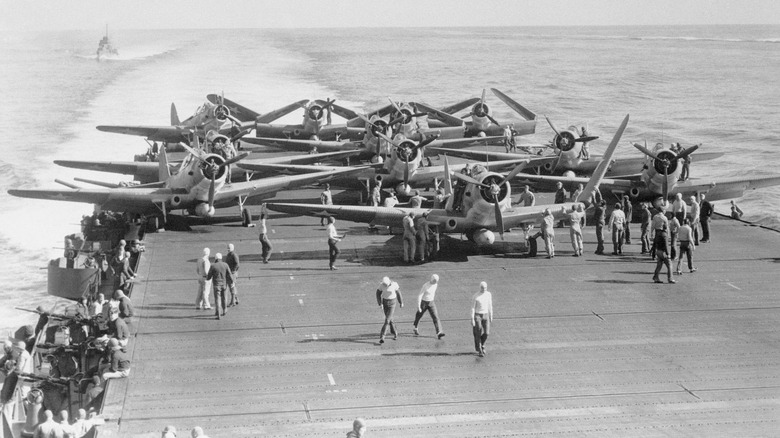Do Aircraft Carriers Travel Alone?
Aircraft carriers are floating airbases that can circumnavigate the globe without refueling, often house a few thousand personnel and dozens of fighter jets, and generally cost about $4 billion for the U.S. Nimitz class to $13 billion for the new Ford class carriers. It's quite the investment, and not something you'd likely send out onto the ocean alone without some sort of chaperone. Which is why aircraft carriers, tough as they are on their own, are vulnerable without protection and almost never travel alone.
It's part of the reason so many have a 50-year lifespan. Like numerous other creatures of the sea, the carriers often travel in packs known as carrier strike groups or carrier battle groups, featuring a flotilla of other warships to escort and reinforce the powerful centerpiece that is an aircraft carrier. All together they are about the last thing any target wants to see coming towards it.
How carriers are vulnerable and what ships form the strike group
The U.S. has 11 aircraft carriers at the moment, and each one is a powerful asset that's a big target for enemy forces. Big is the key word here, since despite being faster than you might think, aircraft carriers aren't exactly the most lithe, stealthy ships on the water, and quite vulnerable to attacks. These attacks can take the form of long-range cruise missiles, underwater attacks with submarines and mines, and missile and bomb attacks from the air. All of that is easier to defend with a few sea friends at your side.
According to the Navy, there are currently 11 carrier strike groups in formation, most of which are based in the U.S. on an ongoing basis with one forward deployed in Japan. They typically consist of the aircraft carrier, two guided missile cruisers, two anti-aircraft warships, and one to two anti-submarine destroyers or frigates. Carrier groups are rarely alike, depending on the nature of the mission. Sometimes there are also other types of ships, including supply ships, mine sweepers, troop ships, and cargo ships carrying tanks and other equipment.
In total all the ships house approximately 7,500 sailors and Marines, and are accompanied by Strike fighters, Growlers, Hawkeyes, Greyhounds, and helicopters. The groups can strike targets upwards of 1,000 miles away, and in unison form an often-unequaled global projection of naval power.
[Featured image by United States Navy via Wikimedia Commons | Cropped and scaled | Public Domain]
The history of dueling carrier strike groups
Since it's among the greatest shows of force in existence, one naturally wonders how often, if ever, two carrier strike groups face off against each other. According to the Navy, carrier strike groups were first used in World War II mostly in conflicts between the United States and Japan in the Pacific, and this is the only time two such groups ever did battle, chiefly at the Battle of Coral Sea and then the Battle of Midway. Considering it was a world war, the groups consisted of more ships than are found in carrier groups today.
While aircraft carriers played major roles during the Cold War, there were no major conflicts featuring carrier strike groups, as the Soviet Union did not seem to possess equally as large carriers of their own. But the U.S. regularly deploys such groups around the world, most recently enroute to the Middle East.
A carrier strike group is about as good an escort as you're going to get, and is perhaps the best answer to the question: "You and what army?" But in this case, it's the Navy.


